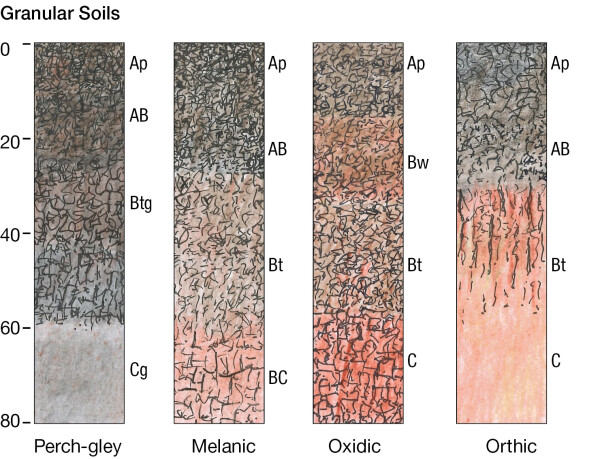Granular Soils are clayey soils formed from material derived by strong weathering of volcanic rocks or ash. Dry or moist soil samples may be easily parted into small hard fragments. When wetted and rubbed between the fingers the clay becomes sticky and may be easily remoulded with little cracking.
Granular Soils occur only in the northern North Island, particularly in the lowlands of the Waikato and South Auckland regions. Parent materials are usually strongly weathered tephras, mostly older than 50 000 years. They cover 1% of New Zealand.
Polyhedral structure is usually well developed. The soils are slowly permeable and have limited rooting depth. Topsoils have limited workability when wet.
Soils are strongly weathered with low nutrient reserves, and low phosphorus status and sulphate in B horizons. They are usually dominated by kaolin-group clay minerals, with some vermiculite.
Soil orders are divided into soil groups based on variation in factors such as drainage status, parent material, chemical and physical properties:
